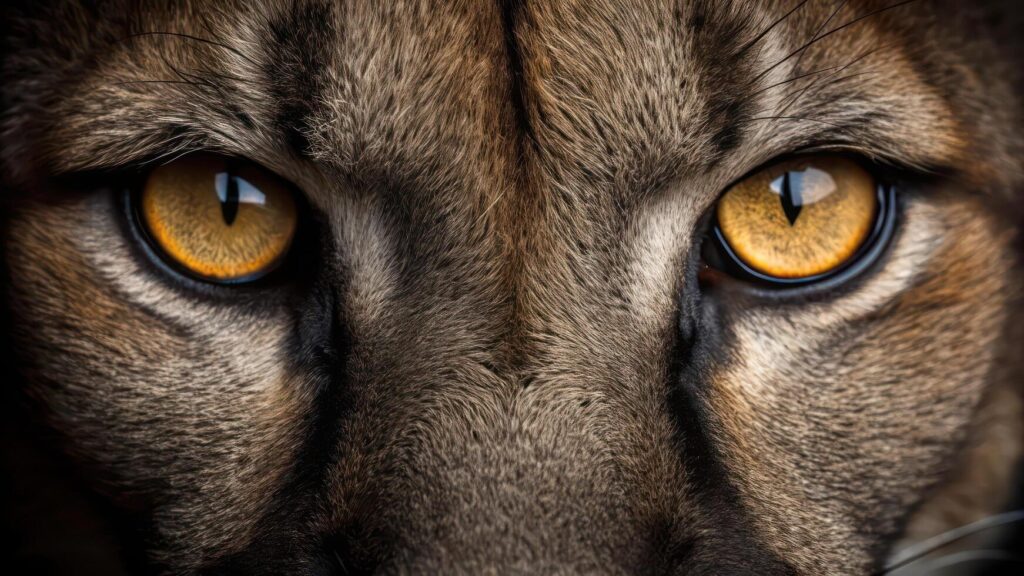Post Category : Field Life Local Archaeology Special Finds
Cabin in the Woods
One day last fall, Vince and I went to revisit an old cabin that had been found deep in the Swan Hills. This cabin had been found during an historic resource impact assessment back in 2009, and we just need to check to make sure that the new harvest block was going to avoid the site. The cabin, GfQa-2, was located on the tip of a narrow point along the East Prairie River valley, approximately 60 km south of Driftpile, Alberta.
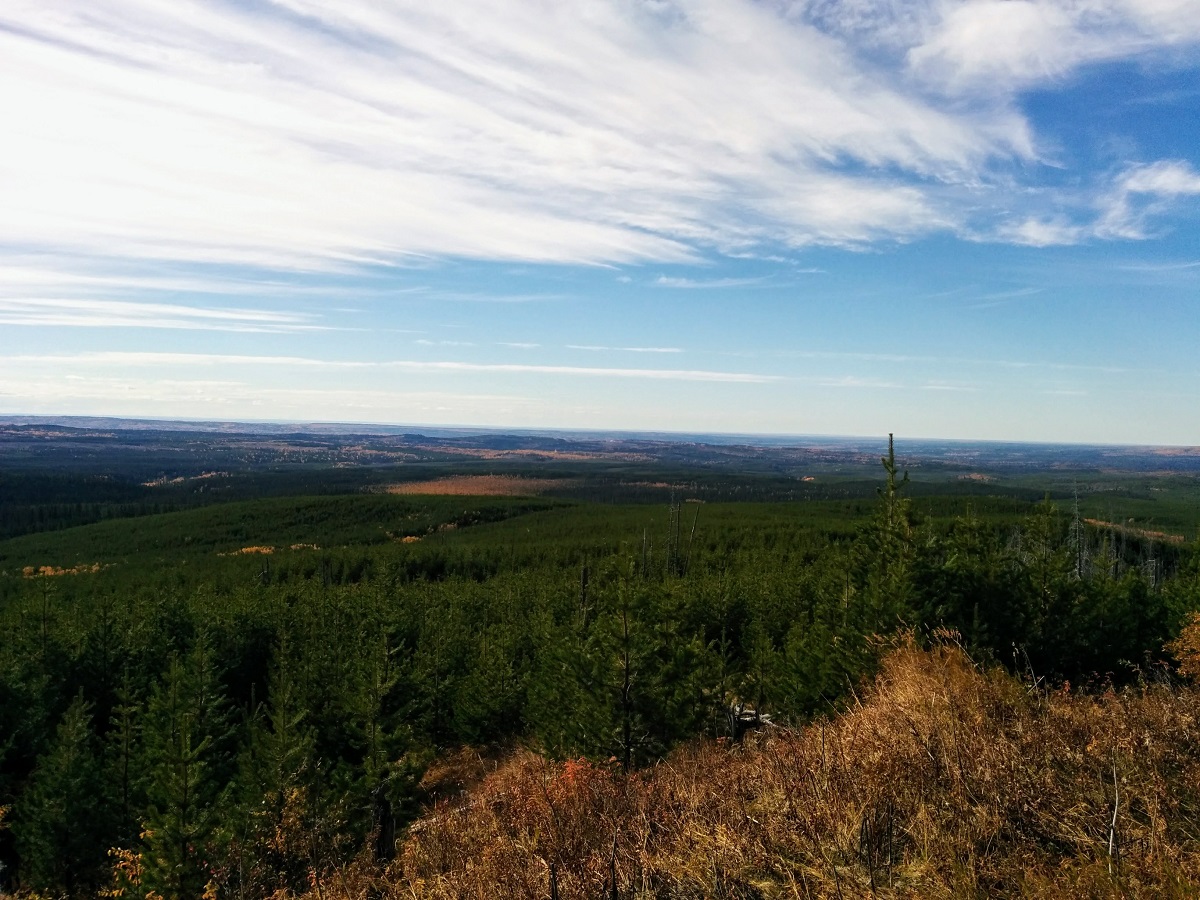
After a long hike through dense fir, we finally reached the recorded spot for the cabin. Unfortunately, there wasn’t much of a structure to see on the surface. It took us a few minutes to find the 5 by 5 meter square outline of the cabin foundations, right on the river valley edge. It was hard to see as there was only one course of saw-cut logs remaining from the walls and even these were covered in a thick layer of moss and lichen. The cabin had been collapsed for so long that even a large white spruce tree was growing over one of the corners.
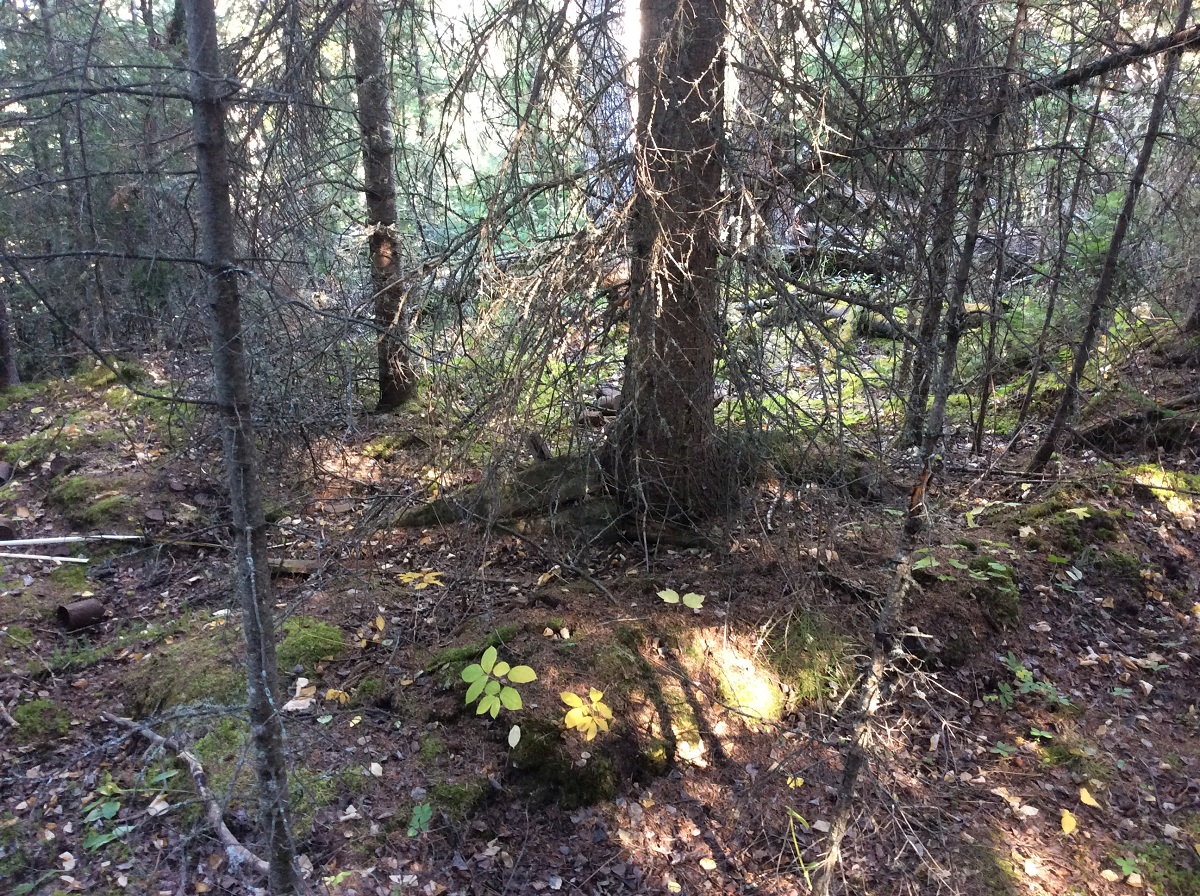
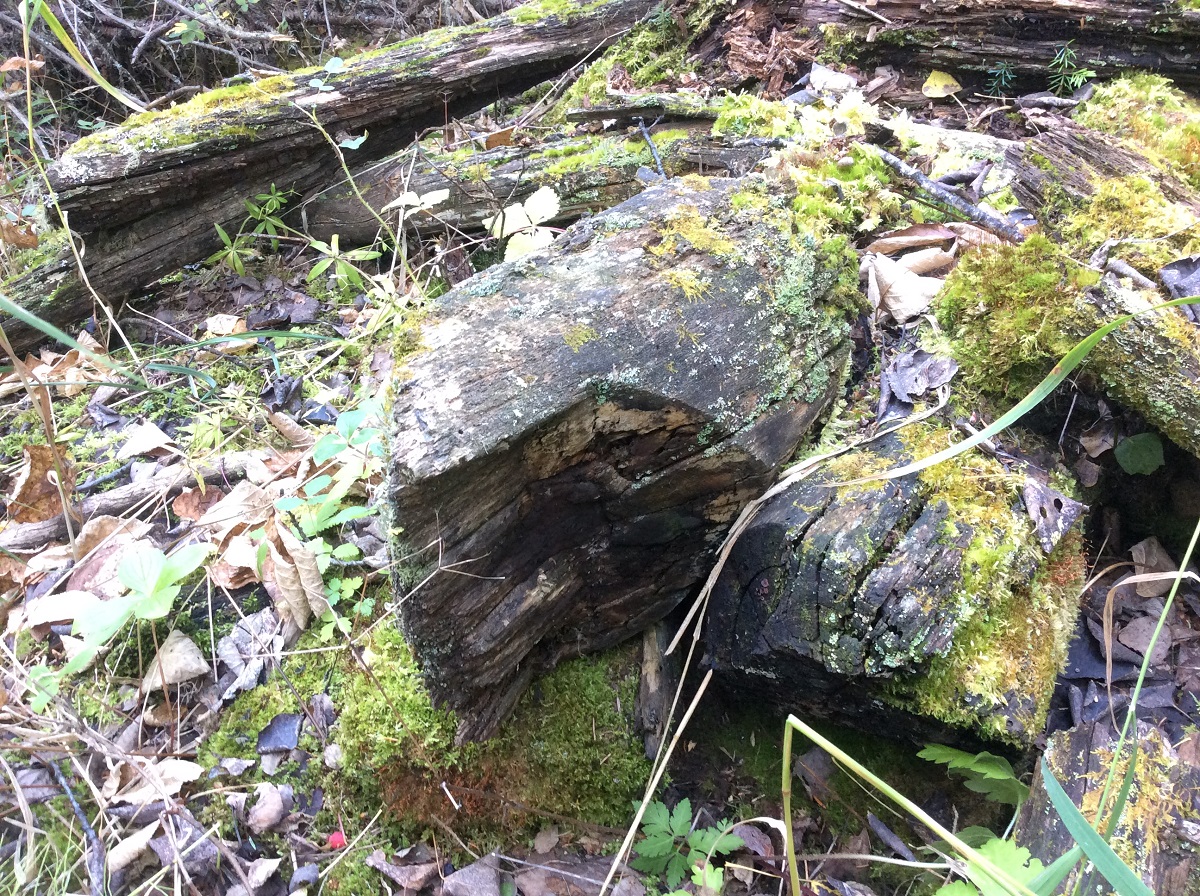
We also noticed two small pits near the cabin walls. The smaller of the two pit features (roughly 1 m in diameter and 60 cm deep) was about 15 meters southeast of the cabin. The second larger pit (2 by 1 m and 60 cm deep) was location a few meters northeast of the cabin wall. We couldn’t find any artifacts in these pits, but we concluded that the smaller pit was likely the privy and that the bigger one may have been some type of root cellar.

In contrast to the cabin itself, it was much easier to find the piles of historic artifact around the cabin entrance. Lying on the mossy surface of the site were a number of a metal buckets, glass mason jars, and several rusted metal cans. Artifacts like these are fairly common at historic cabin sites, and at first glance, these artifacts might seem like rusted bits of garbage. However, Vince and I were actually able to find out a lot about the site by looking at these artifacts. For example, one of these cans found a second life as a strainer. The label had long since rusted off of this can so we can’t tell what it originally held, but the bottom of the can had been repeatedly punched with a square nail or metal punch. I suspect that the people living at the cabin weren’t cooking up pasta, instead this can may have been used to wash berries or any number of small food items.
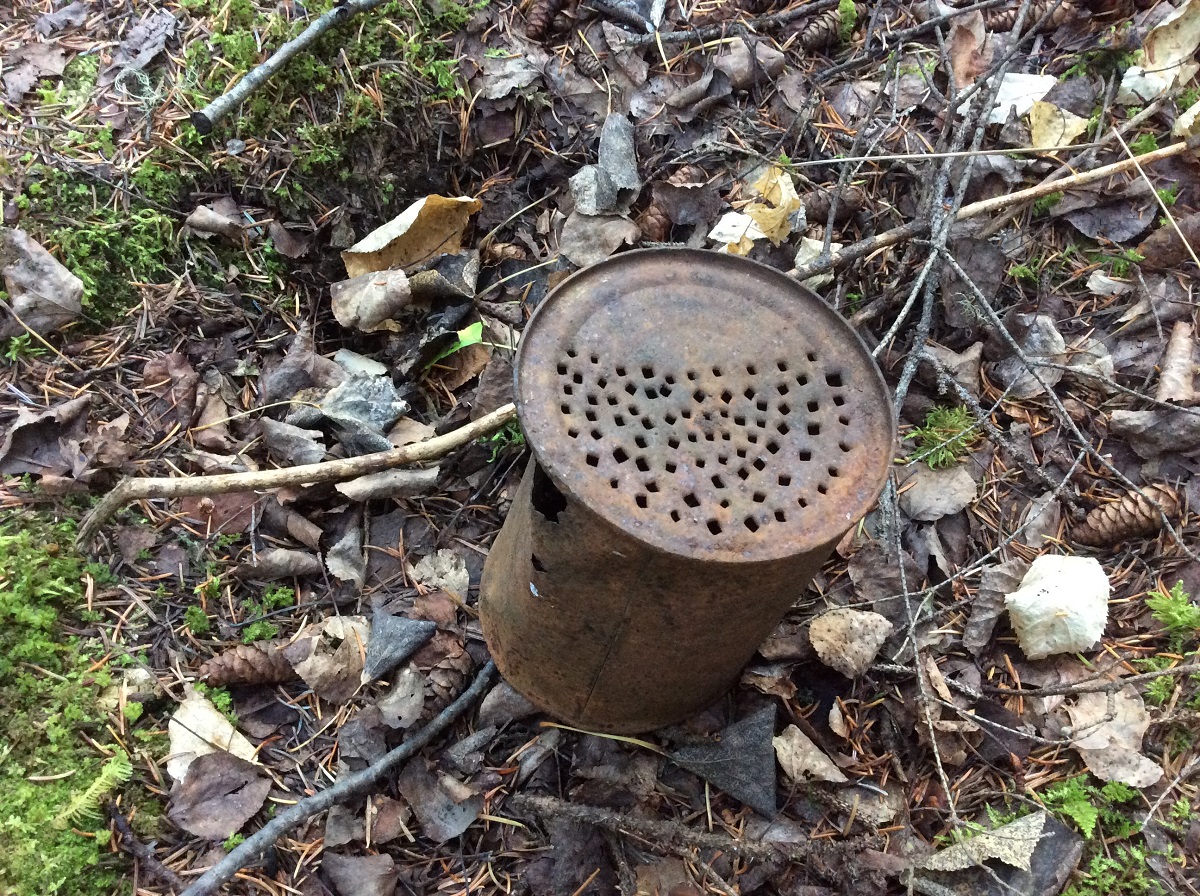
The three artifacts that revealed the most about the people who lived at the site were a set of cans with the labels still preserved. With these labels, we can identify what kinds of food products were brought to the site, and the time period when they were purchased. Certain important changes to labeling laws, like the introduction of the metric system in 1976, can help us to determine age brackets for an artifact (Must be younger or older than X date). Certain styles of labels can also help us to isolate a time period (like a ‘Phantom Menace’ commemorative Pepsi Can that could only date to 1999). By comparing the artifacts to preserved examples of different branded products, we can begin to isolate when this historic cabin was occupied. Unfortunately, the labeling style of different brands that were used in the past has not been well documented, so it is difficult to precisely date a can, even when there is a label.
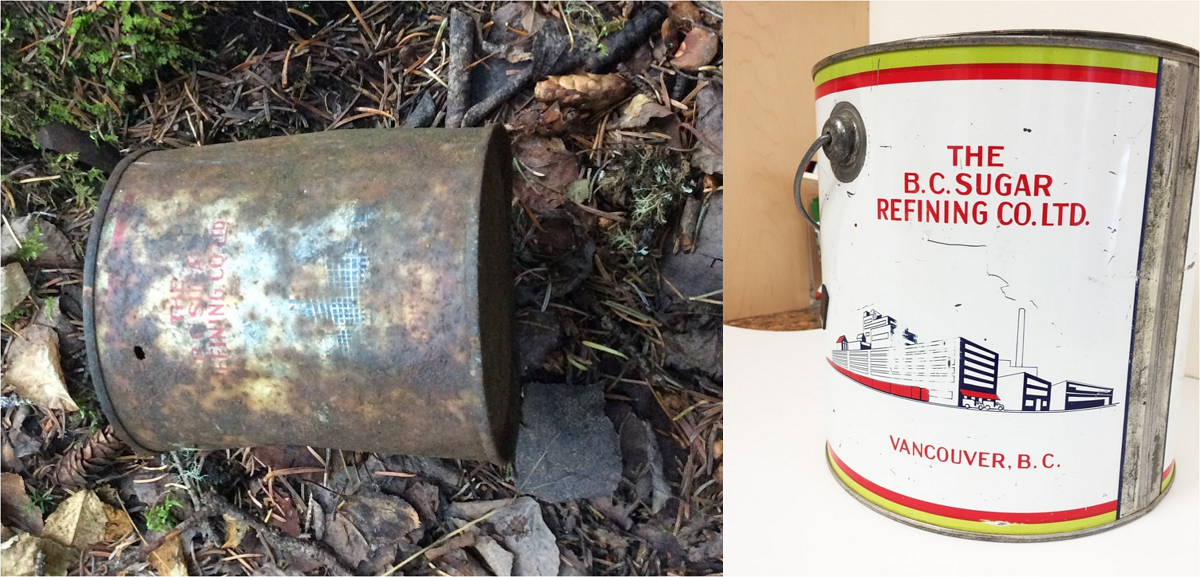
The first can we identified was a 20 lb can of Roger’s Golden Syrup from the BC Sugary Refinery. This company began the production a variety of sugar-based products in 1891 and we still buy Roger’s Sugar products today in our grocery stores. There is no date listed on the can but the style of the label seems to match examples of preserved cans from the 1940’s and 50’s.
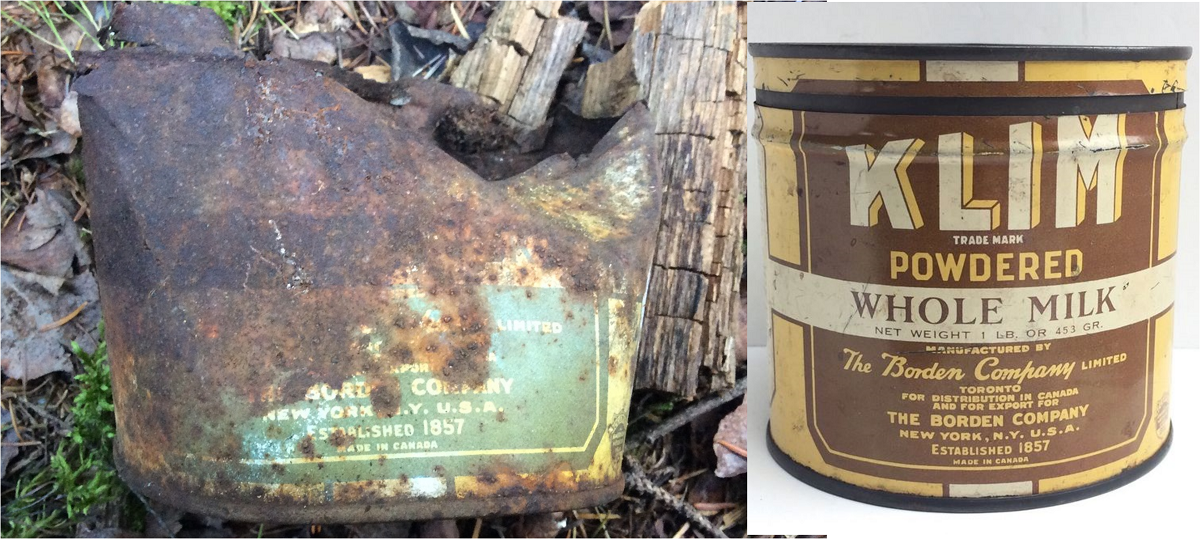
The second can that we were able to identify was a tin of Klim from the Borden Company. Klim is a brand of powdered or condensed milk, that was extremely popular throughout the 1900’s. Originally produced by the Merrell-Soule Company in New York, Klim was marketed with the slogan, “Spell it Backwards’. In 1927, the brand was purchased by the Borden Company and remarketed as a Borden Company product. We can only see part of the label on the artifact preserved at the cabin, but the type font and labeling matches other examples of Borden Company Brand Klim. The Klim brand now belongs to Nestle, who continue to produce Klim powdered milk products around the world.
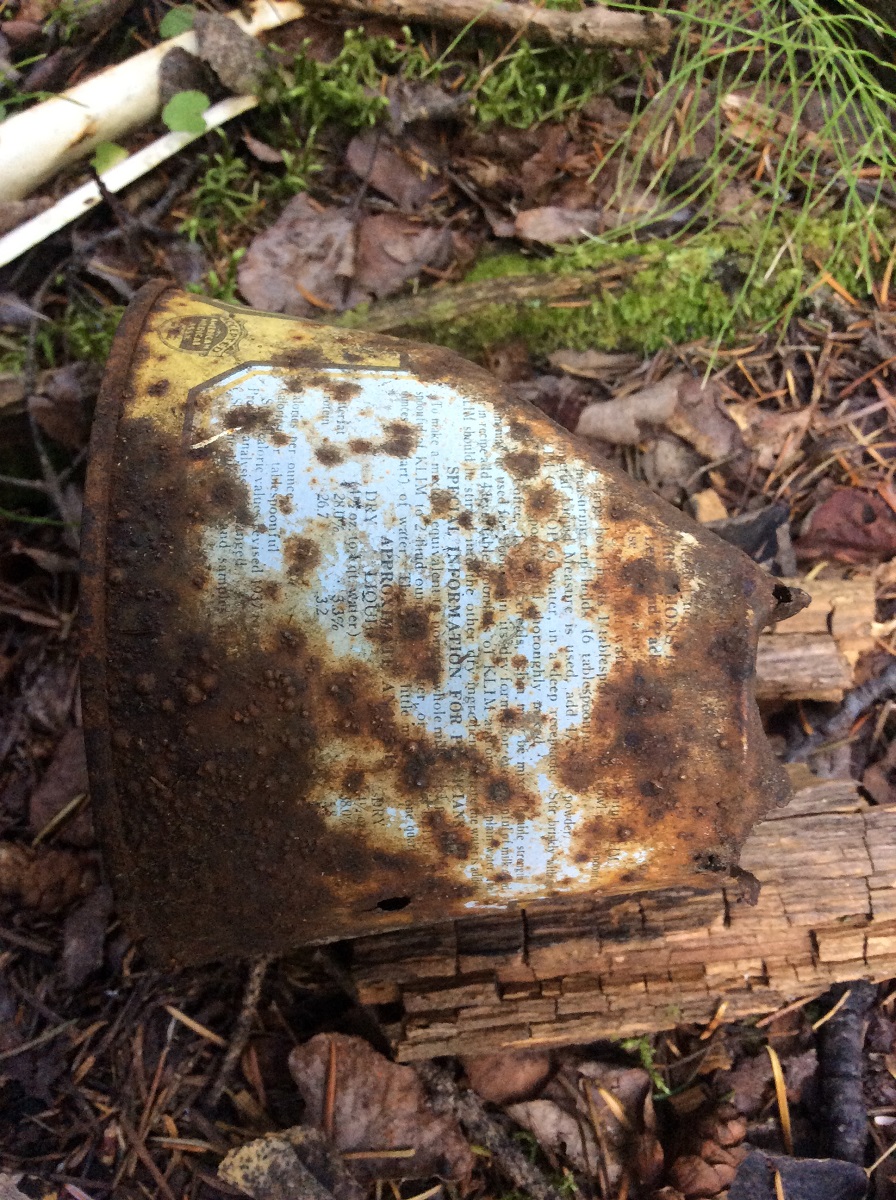
The third can was the most difficult to identify, as most of the label has been covered with rust and the company name was not preserved. It does seems, however, that this is another can of Borden Company Klim. This is largely based on the shape of the label border and the colour of the can, which is similar to the front of the other preserved label. There was a fair bit of interesting material to read on this label. There is a seal of approval from the American Medical Association (bottom left of label). In 1929, the American Medical Association started a committee to approve the quality and safety of infant formula and other food products. Similarly, one portion of the label reports that the product adheres to the 1937 standards for caloric values. Throughout the 1930’s in Canada and the United States, there was a large push to create a framework for people to maintain optimal health, as well as to combat false or inaccurate claims for food products. The instructions printed on the can also list how to best mix the Klim with water or coffee, as well as a set of special information for physicians to make the equivalent of whole milk. So based on this, it seems likely that this was a can of Klim, produced some time after 1937.
Looking around at the other type of cans we found at the site, a number of them have a similar size and design to the Rogers Golden Syrup container, as well tins of Klim. It seems then that the owner of the cabin had a bit of sweet tooth when it came to their meals. Another intriguing possibility is that the Klim and syrup were used for baby formula, as these are common ingredients in early 20th century baby formulas. During the 1930’s through 1960’s, it was common for mothers to mix powdered milk with honey or syrup to used as infant formula. This was a practice that was recommended by many doctors at the time as the mixture was fattening, even though earlier condense milk products during this period lacked any significant amount of nutrients or minerals (These were added later once doctors realized that we need them to survive). So we might be seeing evidence that a family was living at this cabin, but it is hard to say conclusively that this was the case.
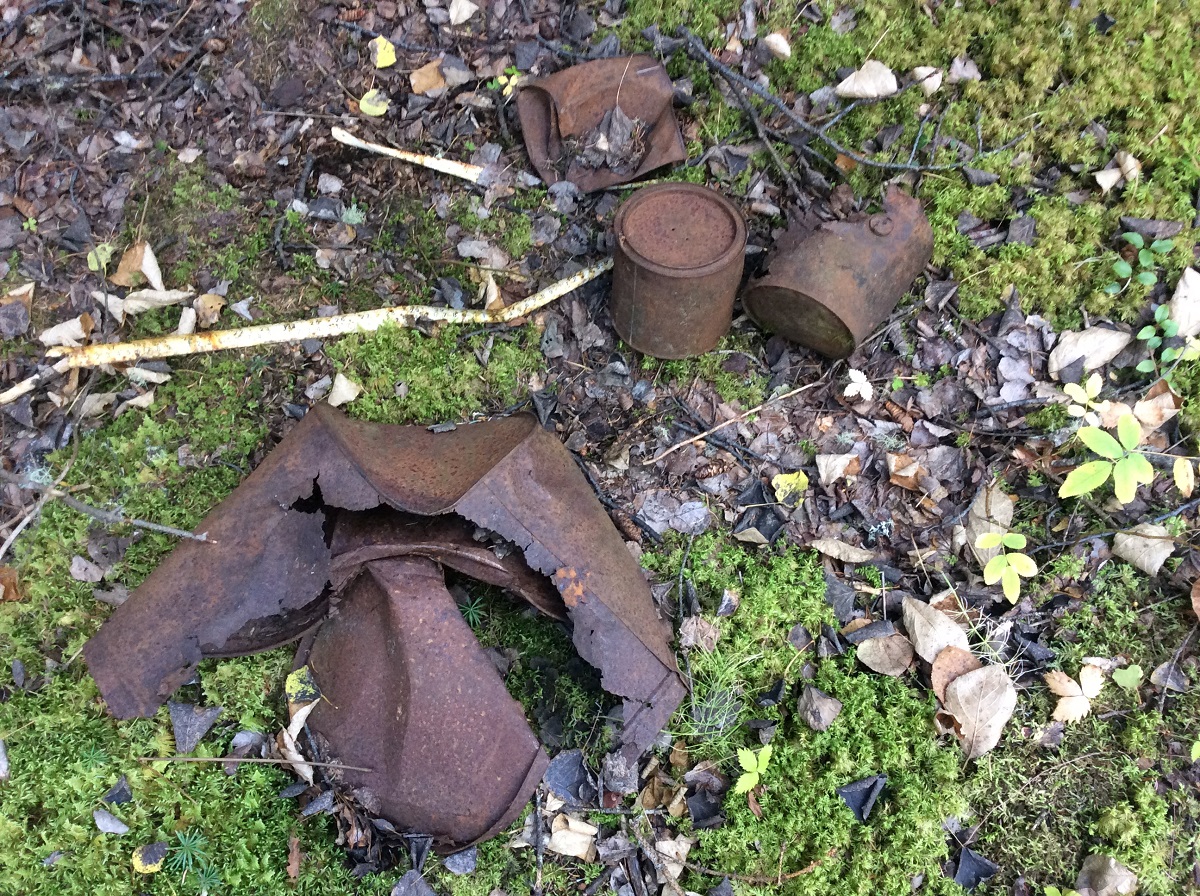
Based on the kinds of artifacts we were able to identified, we can reasonably guess that the cabin was built some time after 1937 and probably used during the 1940’s or 50’s. But how long did people continue to live at the cabin? The structure is largely gone, so we know that it has been left for some time. However, it is hard to know how long a place has been abandoned. Historic structures can often go through different phases of use, from a permanent residence to a seasonal home or travelers rest stop. One way to determine this is to look at the local vegetation and see how much has grown over the site. At this site, there is a dense growth of balsam fir and white spruce over the site, so it appears to be abandoned for some time. There was also one particularly large white spruce with a diameter of about 30 cm, growing over the south corner of the cabin. This is the perfect situation to determine the amount of time since the cabin was abandoned, because that tree could only start growing after the roof and walls of the cabin had collapsed. Tree growth rates vary considerably based on local conditions, but it would likely take approximately 40 to 60 years for a white spruce to reach that diameter and height. So, given what we know from the artifacts at the site, we can conclude then that this cabin was occupied some time between 1937 and abandoned some time after the 1960’s.
From a few cans in the middle of the forest, deep in the Swan Hills, we can get a snap shot of life from almost 70 years ago. We can see the kind of food that people were eating and what they considered important enough to carry 60 kilometers into the bush with them. Even though this little neck of the woods might seem secluded, so remote that you’d think nobody would visit, but just over 2 kilometers away from this cabin, on a little ridge, we found a 10,000 year old spear point. From the Ice Age to the Modern Age, it goes to show how even the most remote places can have the deepest history.
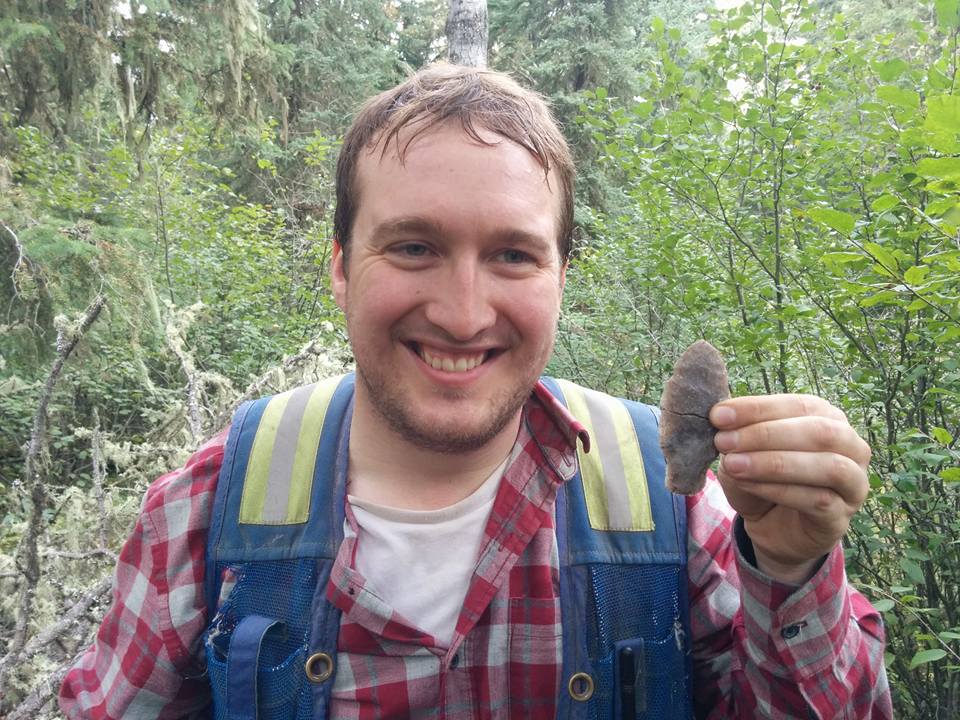
Authors Note: If you feel like you can better identify these cans, or if you feel like you know who could have lived at this cabin, please feel free to leave a comment or contact us directly about it. Any information that you share will be greatly appreciate and will also help us to tell the stories of the areas we visit.

